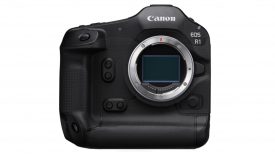
The Tokina Cine 11-20mm T2.9 has been around since late last year, and I thought it was a good idea to put it through its paces and see how it compares to the 11-16mm T3.
But before I do that, let’s have a look back at Tokina’s long history of making ultra wide zoom lenses.
The 11-20 owes its existence to the 11-16mm f/2.8
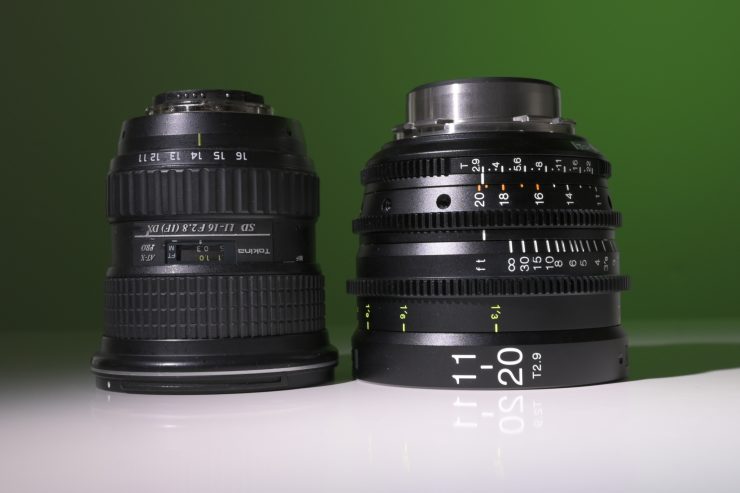
The Tokina 11-16mm f/2.8 was announced way back in November 2007 and it started shipping in mid-2008. It was ‘THE’ go-to wide angle lens for a lot of shooters who were using APS-C sensor cameras such as the Canon 7D at the very beginning of the DSLR video shooting revolution.
Even today it is widely used by shooters using Super 35 sensor digital cinema cameras.
I still own a Canon mount version of this lens as well as a Nikon mount version that I still use to this day. What a lot of people don’t realize is this lens could be made to work on a full frame sensor if you zoomed in to around 15mm. Granted it was pretty soft out on the edges of the frame, but it did work.
The 11-16mm was not only affordable, but its optical performance was arguably just as good, if not better than lenses that cost significantly more money.
It was not only a very sharp lens, but it was also fast (f/2.8) for a lens that was this wide.
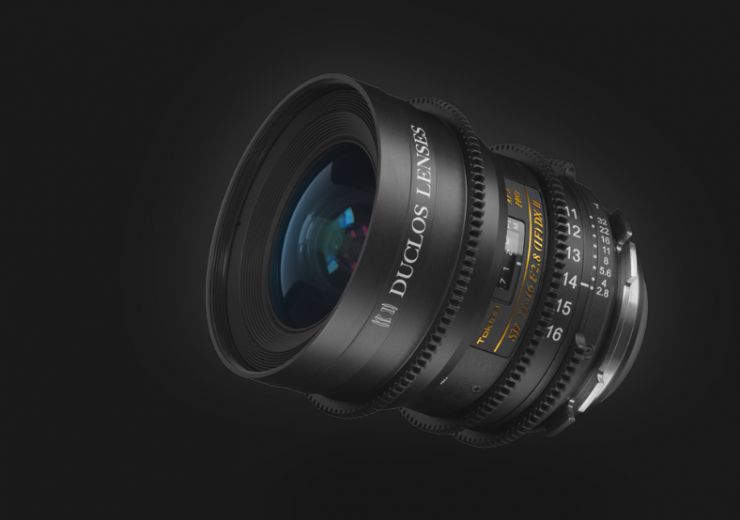
The lens was so popular that quite a few Cine versions of the lens started appearing. First from Duclos, and then from companies such as GL Optics.
Eventually, Tokina decided to release their own cine version of the lens. They announced the 11-16mm T3 way back in 2013 and eventually it was available to purchase in 2014. This lens was originally only available in Canon EF mount and M4/3 mount, but eventually, a PL version came.
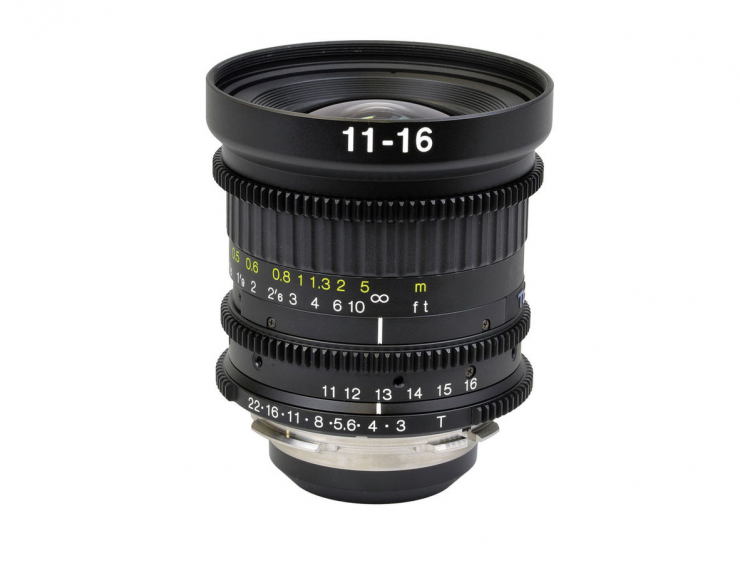

Tokina Cinema 11-16mm T3.0 PL Mount 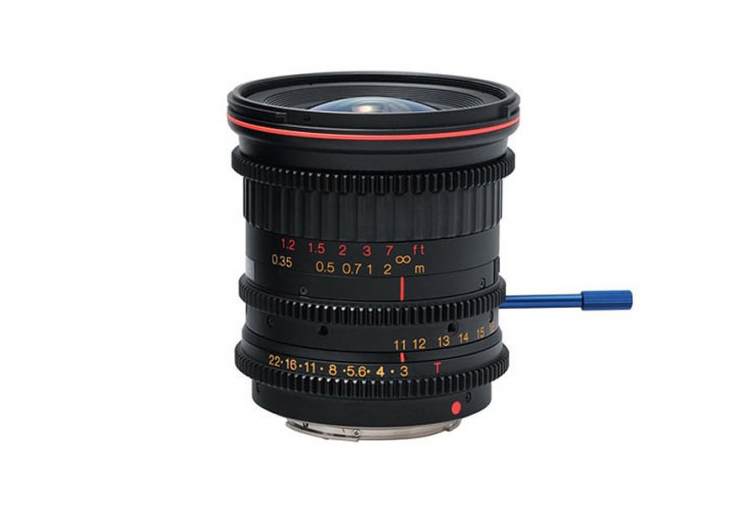
Tokina Cinema ATX 11-16mm T3.0 Mk II (EF Mount)
Since that time the cine version of the lens has gone through several different iterations and designs. It was available in both PL and Canon EF mount versions. To this day the Tokina Cinema 11-16mm T3.0 is still by far the most affordable PL wide angle zoom on the market retailing for $1,599.00 USD.
While people loved the 11-16mm, a lot of shooters wanted a little more reach, and that’s how the 11-20mm f/2.8 came into existence.
A few days before Christmas 2014 Tokina officially announced the 11-20mm f2.8, and at the CP+ Show in Japan in early 2015 we got to see it first hand.
Just like the 11-16mm f2.8, the 11-20mm f2.8 was originally getting cine modified by third-party companies such as GL Optics.
It took Tokina three years to unveil their own dedicated cine version.
Tokina Cine 11-20mm T2.9
So now that we have brushed up on our history, let’s take a closer look at Tokina’s newest wide-angle cinema zoom, the 11-20mm T2.9.
Key features
- Covers Super 35mm Sensors
- Interchangeable Lens Mount
- Cine-Style 0.8 Mod FIZ Lens Gears
- Super Wide-Angle, Low Distortion
- Constant T2.9 Aperture Thru Zoom Range
- Parfocal Lens Design Maintains Focus
- 9-Bladed Aperture Ring
- 95mm Front Diameter
- 12″ Minimum Focus Distance
- Compact, Cine-Style Metal Housing
Build Quality
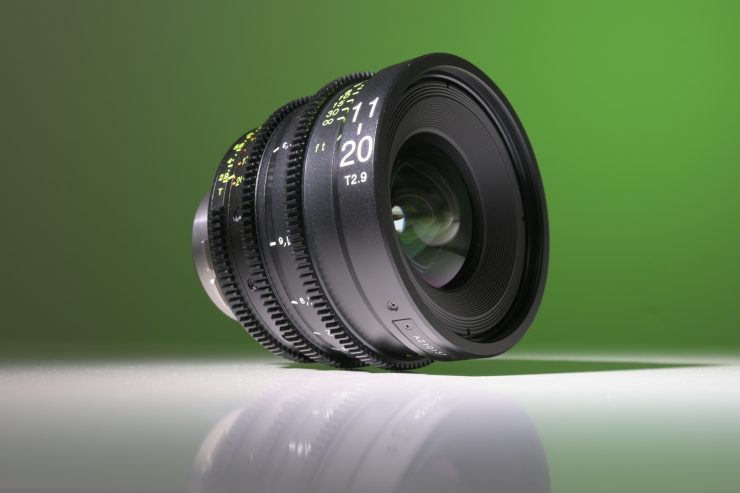
The 11-20mm has a cine-style metal housing and despite its compact size it still tips the scales at 1.1 kg (2.4 lb) in PL mount. The stills version of the 11-20mm F/2.8 in Canon EF mount weighs in at 560 g (1.2 lb).
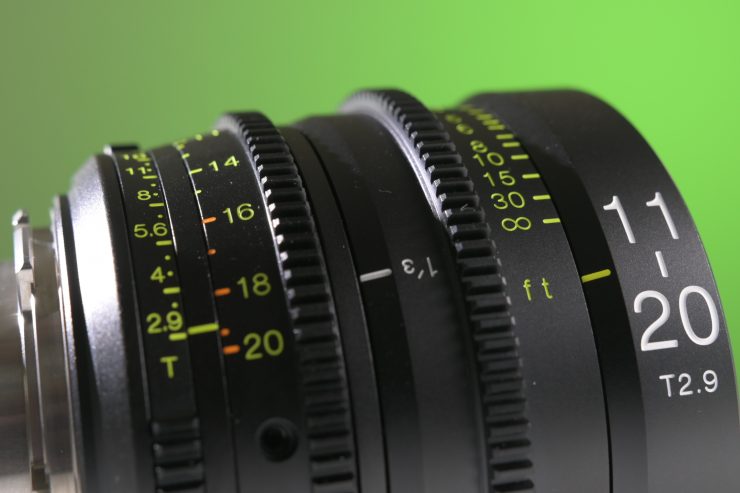
The lens is beautifully made and the focus, iris, and zoom rings all have just the right amount of resistance.
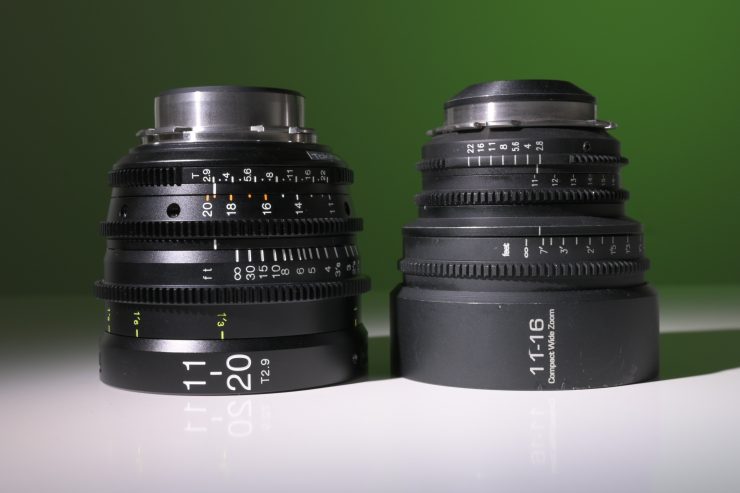
Some of the cine rehousing done by third parties of previous Tokina wide angle lenses left a lot to be desired. Duclos was the only company that was doing it well. I have the original GL Optics cine converted 11-16mm T3 in PL mount and the build quality is far from great.
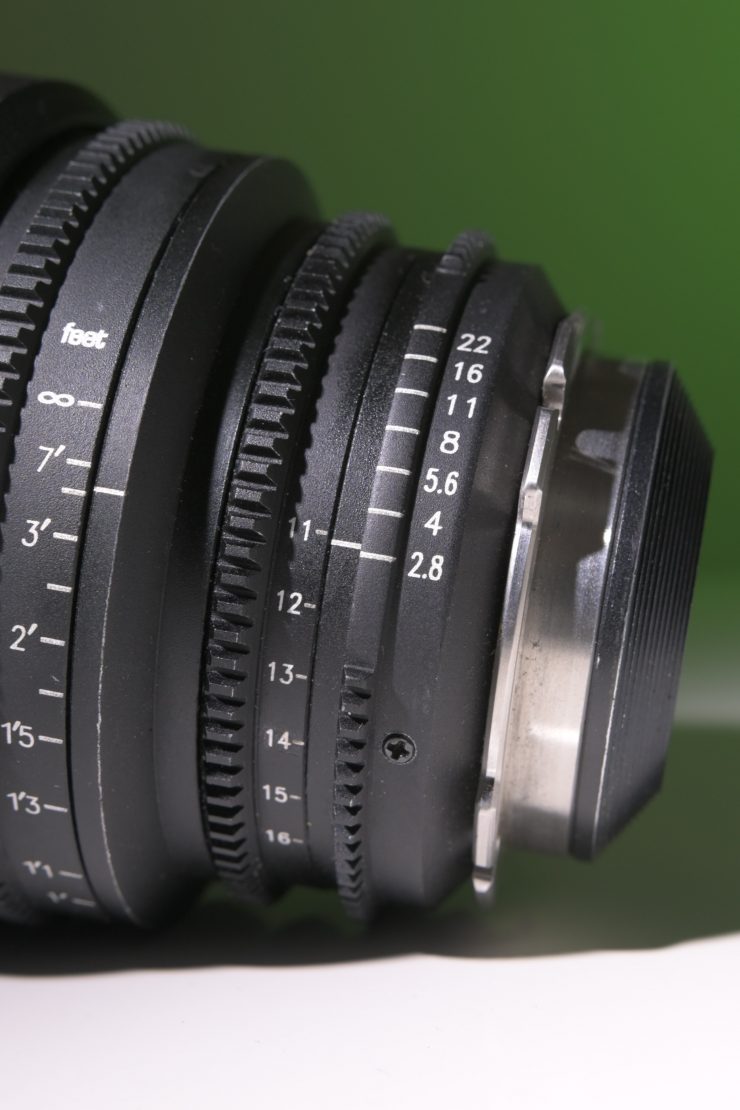
I didn’t like using that lens because the aperture direction is opposite to how it is supposed to be. Instead of opening up the iris I would constantly find myself closing it down. When you have years of muscle memory you instinctively move lens barrels without having to think about it.
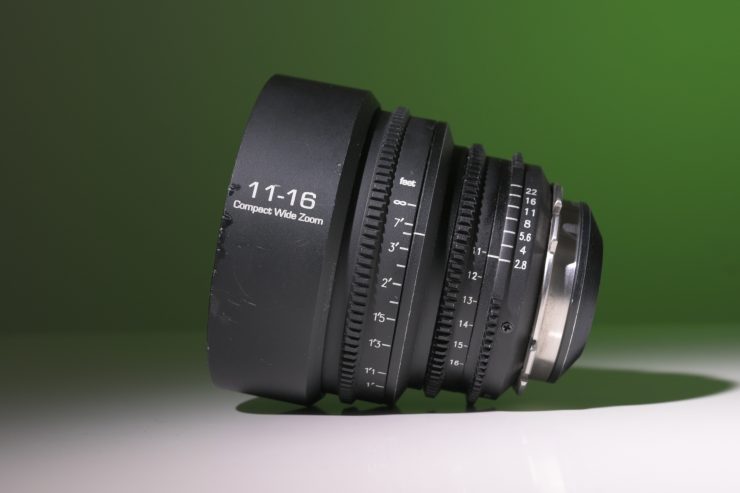
In GL Optic’s defence, there were limitations to what you could convert from the stills version of the lens. Because the lens was never designed with a manual iris in mind, the aperture mechanism inside the stills version was the reverse of what it should be. The Duclos lens conversion of the 11-16mm was also the same, with the aperture also the opposite way around.
I often see people buying cine converted lenses that are being done by third party companies. You really need to know exactly what you are getting when you do this. Just because a lens is cine converted, that doesn’t mean that they have increased the focus throw, placed accurate markings or made the focus throw smooth.
There are certain companies such as TLS and Duclos that do fantastic cine conversions, but there are a lot of other companies out there that don’t do great conversions. I would never buy a cine converted lens from a third party sight unseen.
MOD, Focus throw & Front Diameter
The lens has a minimum focus distance of 12″ (30cm), 300° of focus rotation, and an industry-standard 95mm front diameter compatible with most pro-style matte boxes.
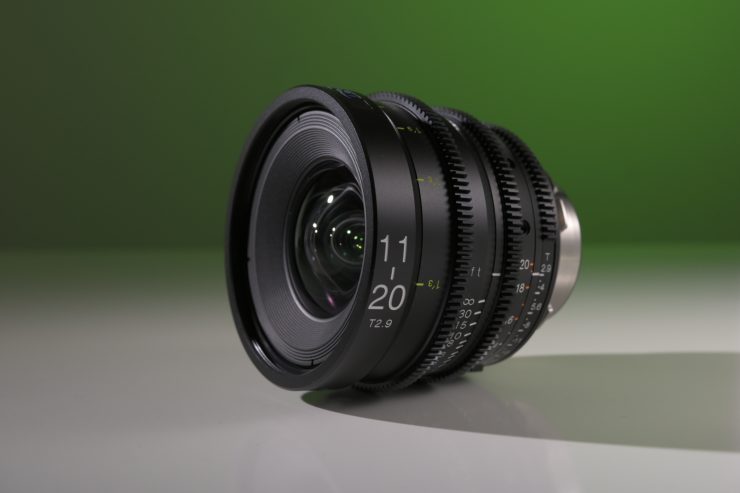
An 86mm front thread provides a second filtration option, which is very handy if you want to run the lens on a gimbal or drone. Even though it’s nice to have an additional front filter thread, 86mm is not a very common size.
I personally think the 300° focus rotation is too much for a small, compact wide angle zoom such as this. Even though the lens barrel is not that large you still can’t physically turn the focus from infinity to its closest focus point by hand in one continuous movement.
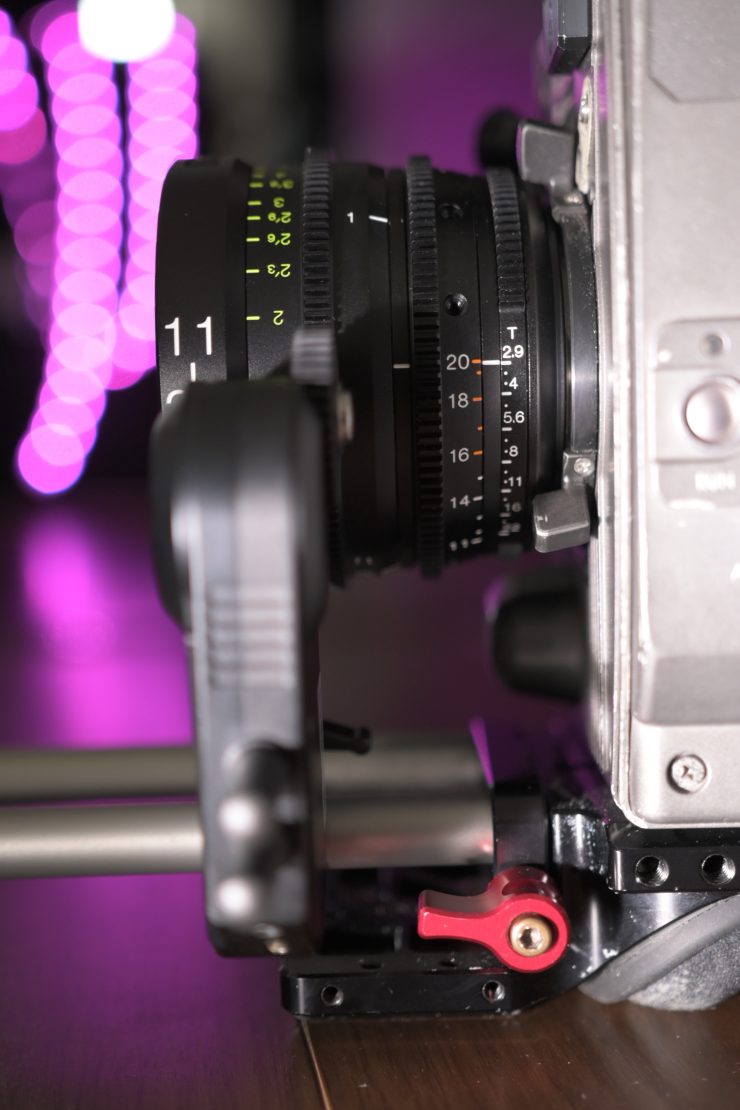
The only way I got to do a smooth focus pull from infinity to the lenses MOD was by using a remote wireless follow focus.
In my opinion, I would have preferred to have seen a focus rotation that was closer to 200°.

Having a 30cm (12″) mininum focus distance is great, as it allows you to create interesting shots and still get some nice background separation when using the lens wide open.
Optical Design
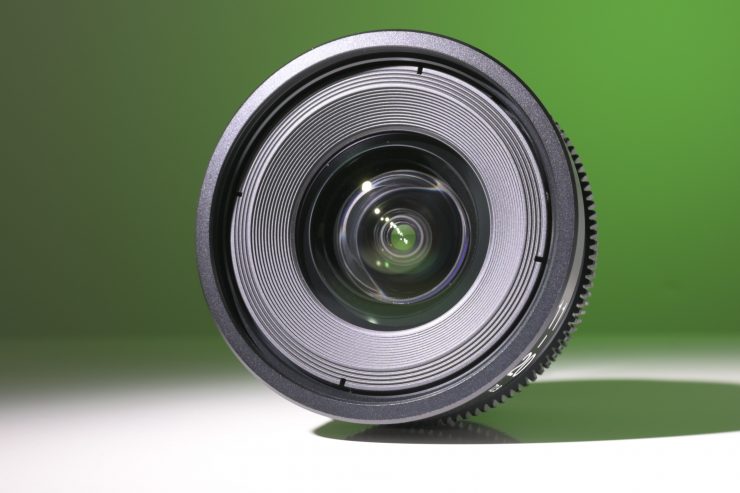
Unlike the Cinema Vista lenses, the 11-20mm is a rehoused stills lens. The lens design consists of 14 Elements in 12 Groups, and there are 9 aperture blades.
The lens uses one P-MO hybrid aspherical element in the front group that pairs with two glass-molded aspherical elements in the rear group to minimize distortions and correct aberrations. Additionally, three SD ultra-low dispersion elements are also incorporated within the lens design to further reduce chromatic aberrations for greater color accuracy and clarity.
Multi-layer lens coatings reduce lens flare and ghosting for greater contrast and maintained color fidelity.

The lens covers an image circle of 30mm and can be used on Super35/APS-C sized sensors. In saying that, you can certainly still use this lens on full frame sensors as long as you are at focal lengths from around 15.5mm and up.
Markings
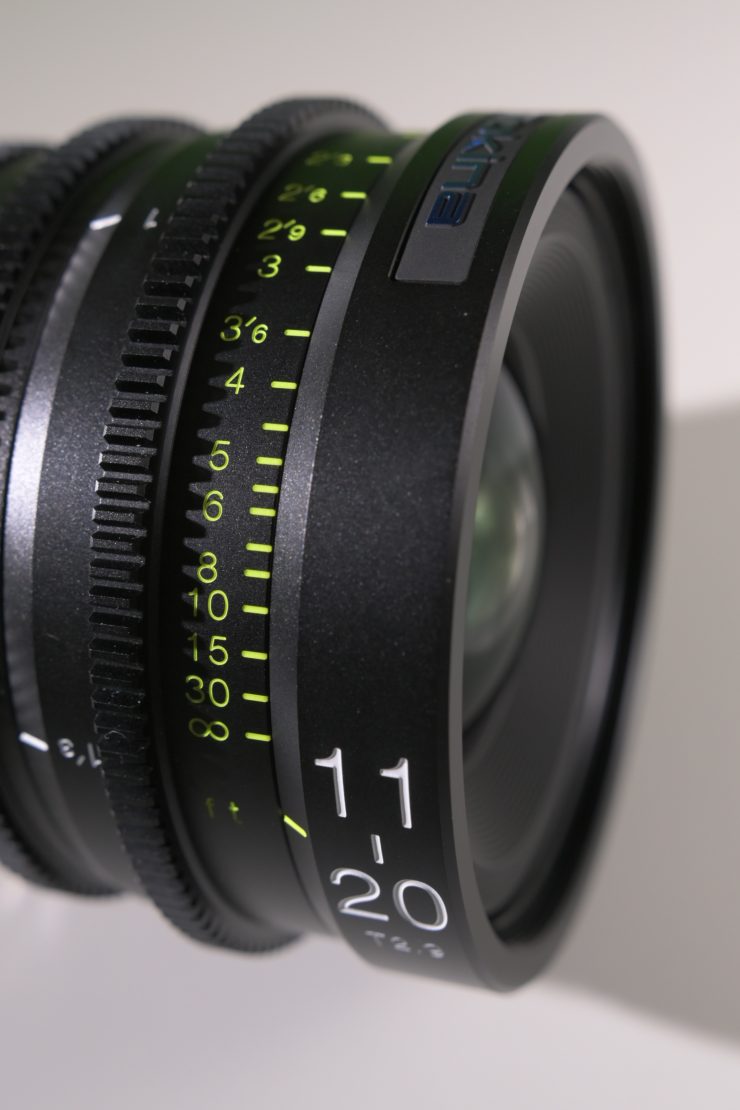
Along with industry standard 0.8 MOD / 32 Pitch focus, iris, and zoom gears, the lens features noticeably fewer markings than what you would find on the companies Cinema Vista series.
User Changeable mounts
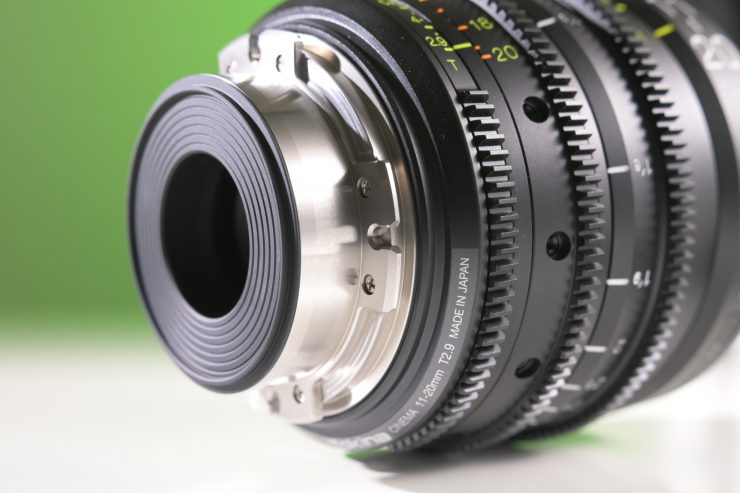
Even though the lens is available in PL, Canon EF, Nikon F, Sony E, and M4/3 mounts, the mount can be user changed. Even an optional LPL mount is available.
While it is nice to have a user changable mount, Tokina reccomends that it is better to have it done at a lens service center to ensure accurate focus scales.
Breathing?
For a zoom lens (even if it quite a short zoom) I was impressed by just how little the lens breaths. Despite having a large 300-degree focus rotation there is very minimal breathing when changing focus from infinity to the lenses MOD.
Fall off and Vignetting
From my testing, I found that the 11-20mm had slightly less light fall off out towards the edges of frame and less vignetting than the 11-16mm, especially when used at 11mm.
Sharpness
At 11mm the lens has nice center sharpness, even when used wide open at T2.9. When used at T2.9 the edge sharpness does fall off, but not nearly as much as it does on the 11-16mm. When you stop the lens down this does improve.
From my testing, I found that the 11-20mm was sharper than the 11-16mm at focal lengths from 11-13mm. At 14 and 15mm they were both fairly even. At 16mm the 11-16mm was sharper than the 11-20mm.
Distortion
A lot of ultra wide-angle lenses can suffer from bad distortion, so how does the 11-20mm perform? The Tokina 11-20mm T3 is a rectilinear wide-angle lens, which means that it is capable of keeping straight lines reasonably straight.
Just because it is rectilinear doesn’t mean that the lens doesn’t suffer from distortion. There is certainly some distortion present with the 11-20mm, but it is well controlled.
While you can clearly see some edge distortion when the lens is used at 11mm, if you zoom in to 20mm it is almost non-existent.
Lens Flare
Here is an area where Tokina have made big improvements over the 11-16mm. The 11-16mm was very suceptable to flare, and what made this worse was that the flare it created was just downright ugly.
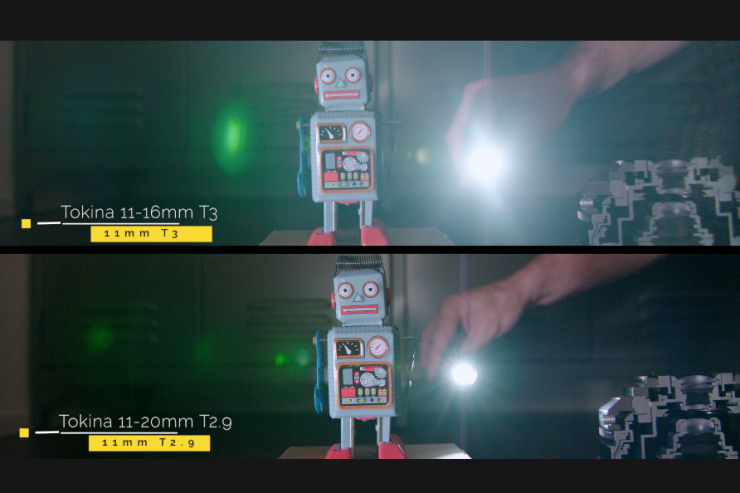
The 11-20mm is a lot more flare resistant and the lens flares it does create are a lot more pleasing to the eye.
Chromatic Aberration
Ultra wide-angle lenses are very susceptible to chromatic aberration, especially when used at their widest focal lengths wide open.
I found there were some small amounts of chromatic aberration when the lens was used at its wider focal lengths at T2.9, but it’s only very marginal. This can be controlled by zooming in slightly. I found that from about 15/16-20mm the chromatic aberration does get reduced.
In my opinion and from my testing I found the handling of chromatic aberration to be slightly better with the 11-120 than it is on the 11-16.
Bokeh
Bokeh is something you don’t usually associate with ultra wide-angle lenses. One of the nice aspects of the Tokina 11-20mm is that it has a very close (30cm) minimum focus distance. This allows you to create some very unusual and interesting shots. If you use the lens wide open at T2.9 and focus on an object that is very close to the lens you can certainly achieve some nice bokeh.
Color Tone
Like most other Tokina lenses, the 11-20mm does lean towards the warm tones, which I personally like, however, this may not be to everyone’s liking.
Real World Thoughts
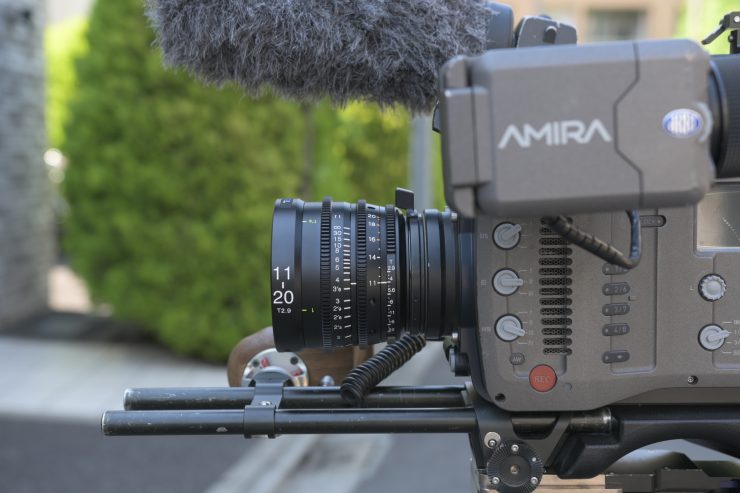
There are times when you absolutely need to have a very wide angle lens, especially when shooting documentaries, news, or even events.
How many times have you been shooting in a car or jammed up against a wall wishing you had a lens that was a lot wider than 16mm?
For me the beauty of this lens, and this goes for the 11-16mm as well, is that it can go as wide as 11mm. With the 11-20mm I found myself mostly using the lens at 11-14mm. Why? Because there are plenty of other lenses that can shoot at 16, 18 or 20mm.
The lens is a joy to use and it most importantly it produces really nice imagery. It’s sharp, it can be used wide open, and it has low distortion for such a wide lens.
My only real gripe is that I wish the lens had a shorter focus throw. I primarily work alone or with small crews and as I’m doing my own focus the majority of the time I don’t need a lens with such a long throw.
How does it compare to the 11-16mm T3?
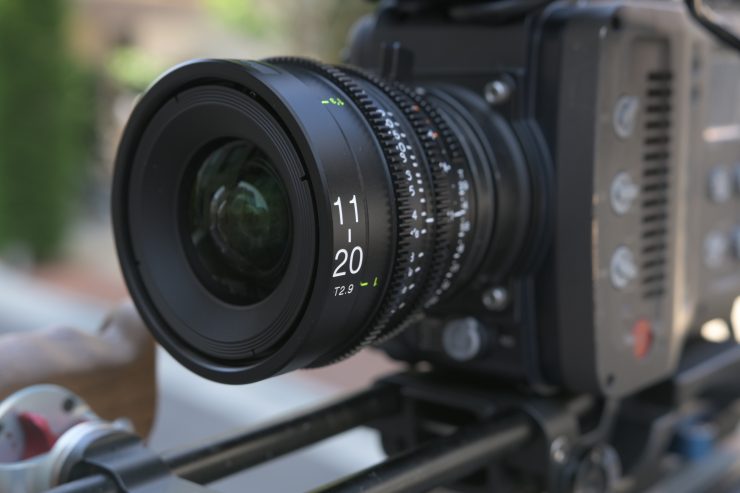
This is a question that people are bound to ask, so I’ll answer it. The 11-20mm is very similar to the 11-16 in a lot of ways. The 11-20 produces a lot nicer lens flares, it has slightly less chromatic aberration, slightly less distortion, better edge sharpness. and I don’t think it vignettes as much as the 11-16.
Having that extra 4mm is a nice addition. I also found from my testing that to my eye the 11-20mm looked sharper than the 11-16mm. What you do need to take into account is that the lens I was using was a first generation 11-16mm and not a second-generation version of the lens.
Price & Availability
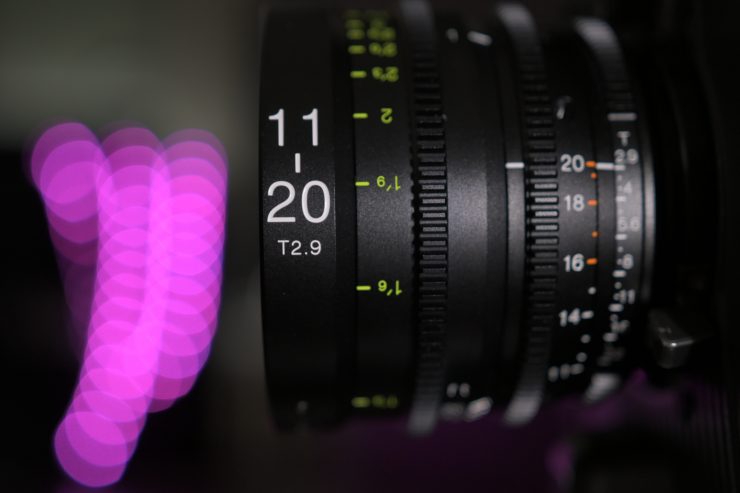
The Tokina 11-20mm T2.9 is available in various mount for the following prices:
- Tokina Cinema ATX 11-20mm T2.9 (PL Mount) $2,399 USD
- Tokina Cinema ATX 11-20mm T2.9 (EF Mount) $2,399 USD
- Tokina Cinema ATX 11-20mm T2.9 (MFT Mount) $2,399 USD
- Tokina Cinema ATX 11-20mm T2.9 (Nikon F Mount) $2,399 USD
- Tokina Cinema ATX 11-20mm T2.9 (Sony E Mount) $2,399 USD
At $2,399 USD the Tokina Cine version of the 11-20 is cheaper than the GL Optics conversion ($2600 USD).
All the versions are currently available except for the Sony E Mount version which will start shipping in June.
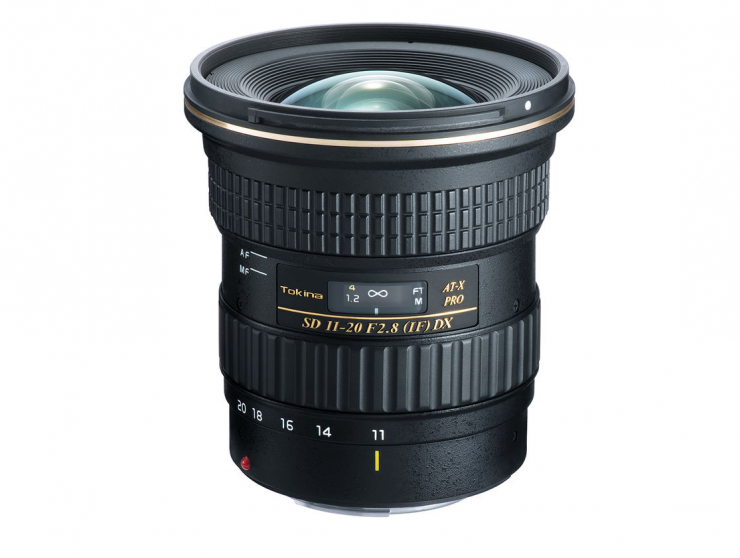
Like any cine converted lens you will pay a premium over its stills counterpart. The Tokina AT-X 11-20mm f/2.8 PRO DX Lens for Canon EF, for example, is available at B&H for $469 USD.
Whether you actually need a cine version of this lens will entirely depend on what you are shooting and your individual requirements.
I personally prefer cine lenses as I hate electronically controlled aperture and I much prefer the larger focus rotation a cine lens offers.
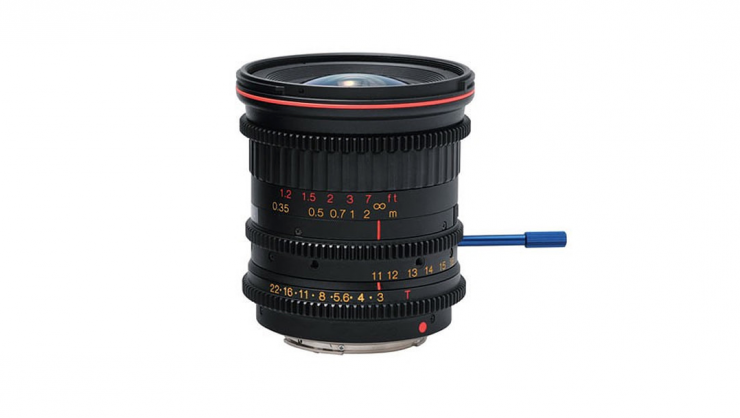
If you are looking for a more affordable super wide angle cine lens then Tokina’s Cinema 11-16mm T3.0 is still a great option. Here are the prices for that lens:
- Tokina Cinema 11-16mm T3.0 with PL Mount $1599 USD
- Tokina Cinema ATX 11-16mm T3.0 Mk II (EF Mount) $1199 USD
Competition
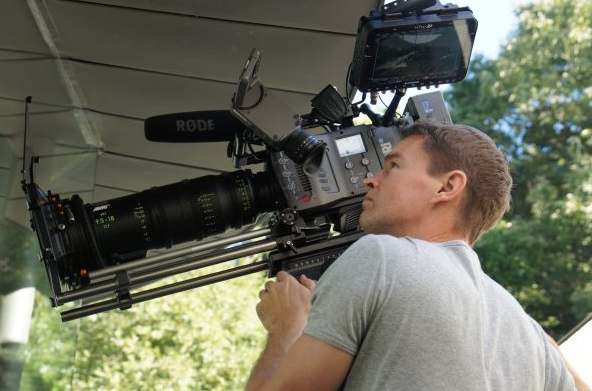
In terms of cine lenses that cover this focal range at this T stop there really isn’t any other options unless you want to spend $52,450.00 USD on ARRI’s 9.5-18mm T2.9 F Ultra-Wide Zoom Lens.
The closest competition would come from Tokina’s own 11-16mm T3 lens.
Conclusion
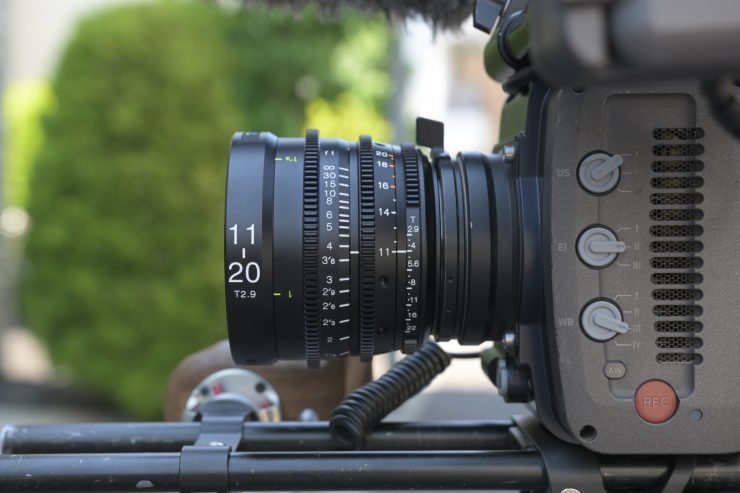
If you are looking for a proper cinema wide angle lens that doesn’t weight a lot, doesn’t cost a small fortune, and performs really well, the Tokina Cine 11-20mm T2.9 is very hard to beat.
Tokina has done a really nice job with this lens and in my personal opinion, it’s better optically than the 11-16mm.
Whether you need a cine version of this lens is very much going to be a personal preference. You may well find that if you are using a camera with a Canon EF, Nikon F, M4/3, or Sony E mount then the standard stills version may be all you need.
For me personally, I prefer proper cinema lenses that enable me to have finite control over focus, iris, and zoom.
The Tokina Cine 11-20mm T2.9 is certainly a step up over the companies 11-16mm T3 version. The cine housing, over all build quality, and attention to detail makes it a lot more polished and professional lens that would be right at home being used on any level of production.





